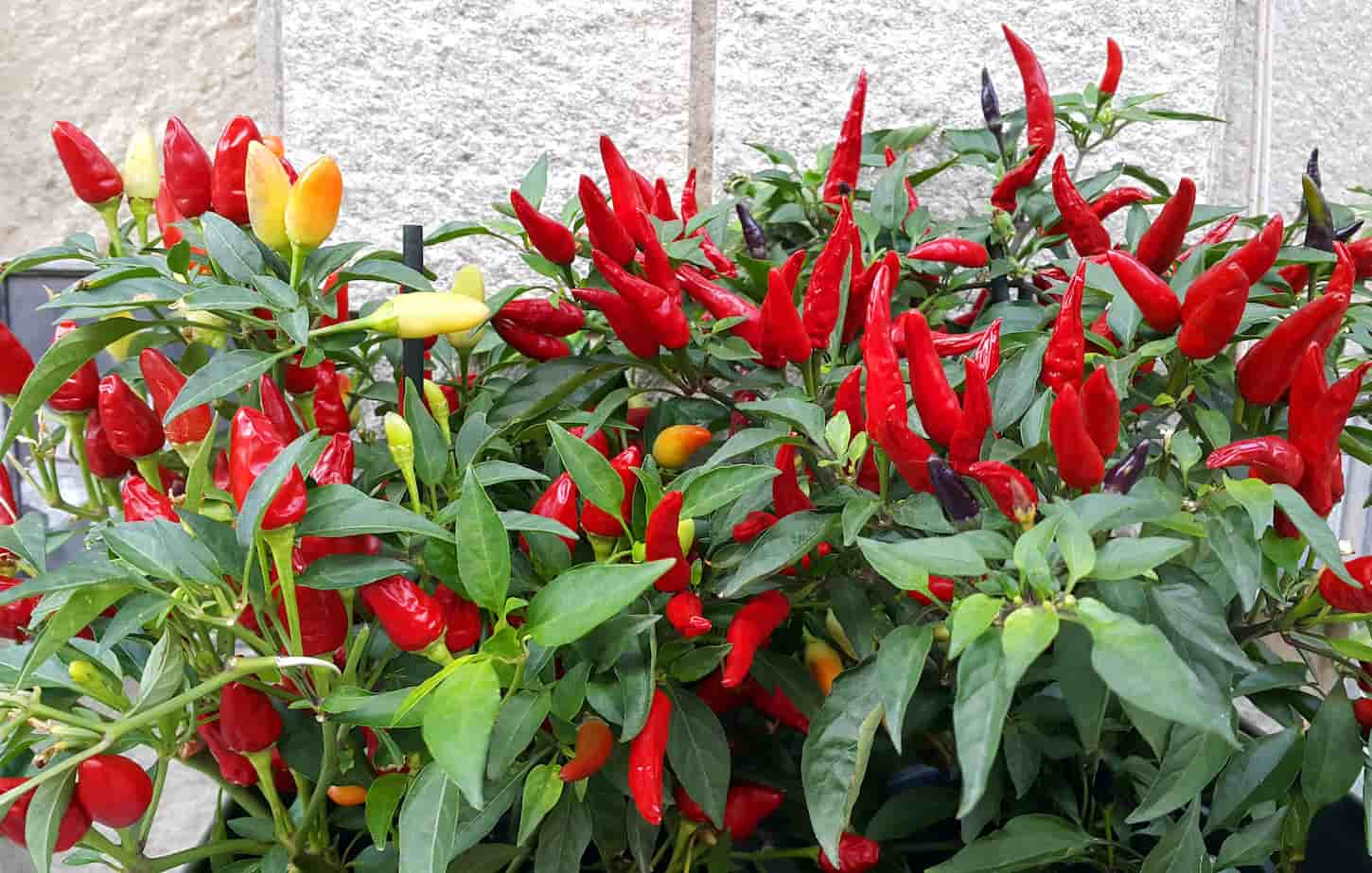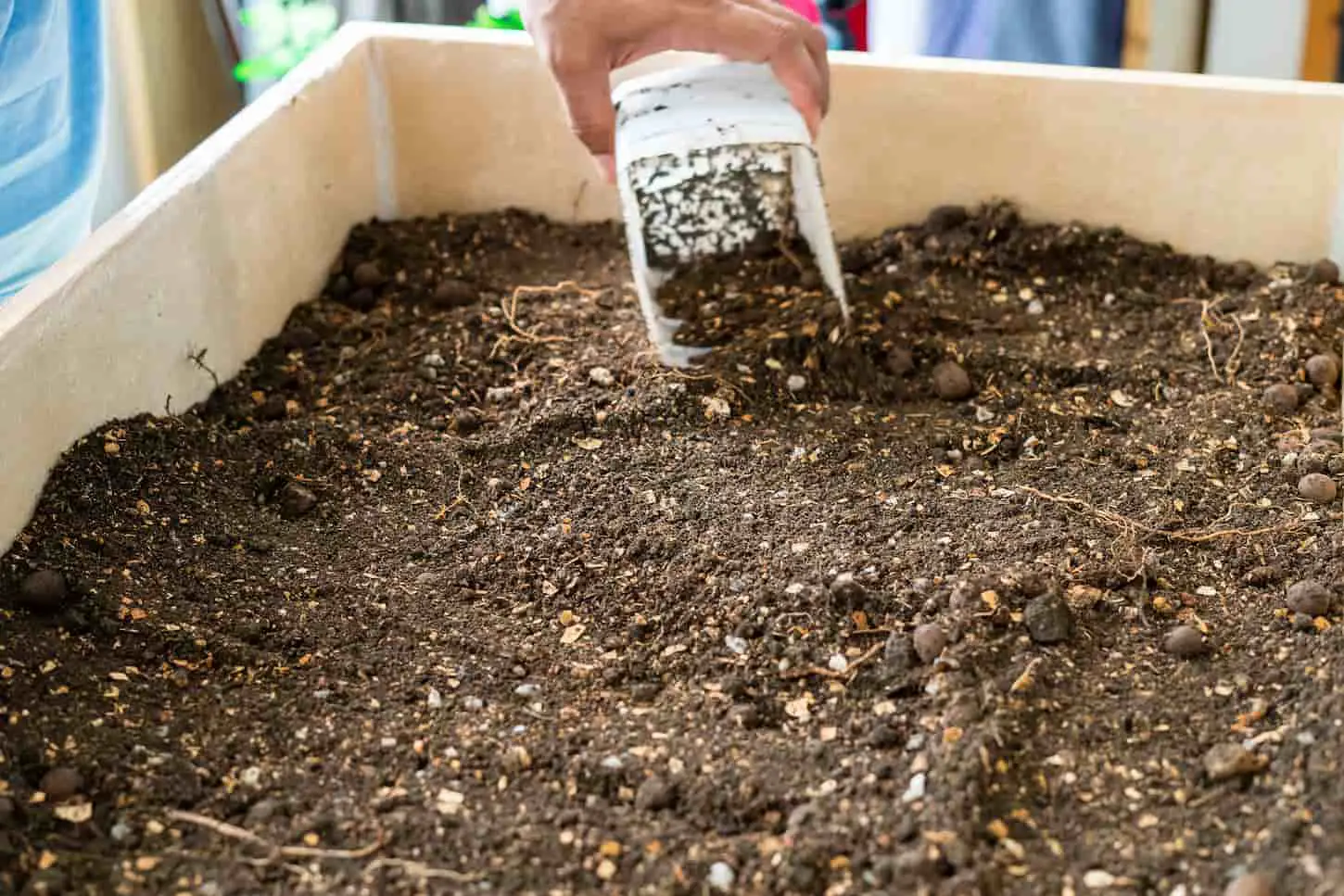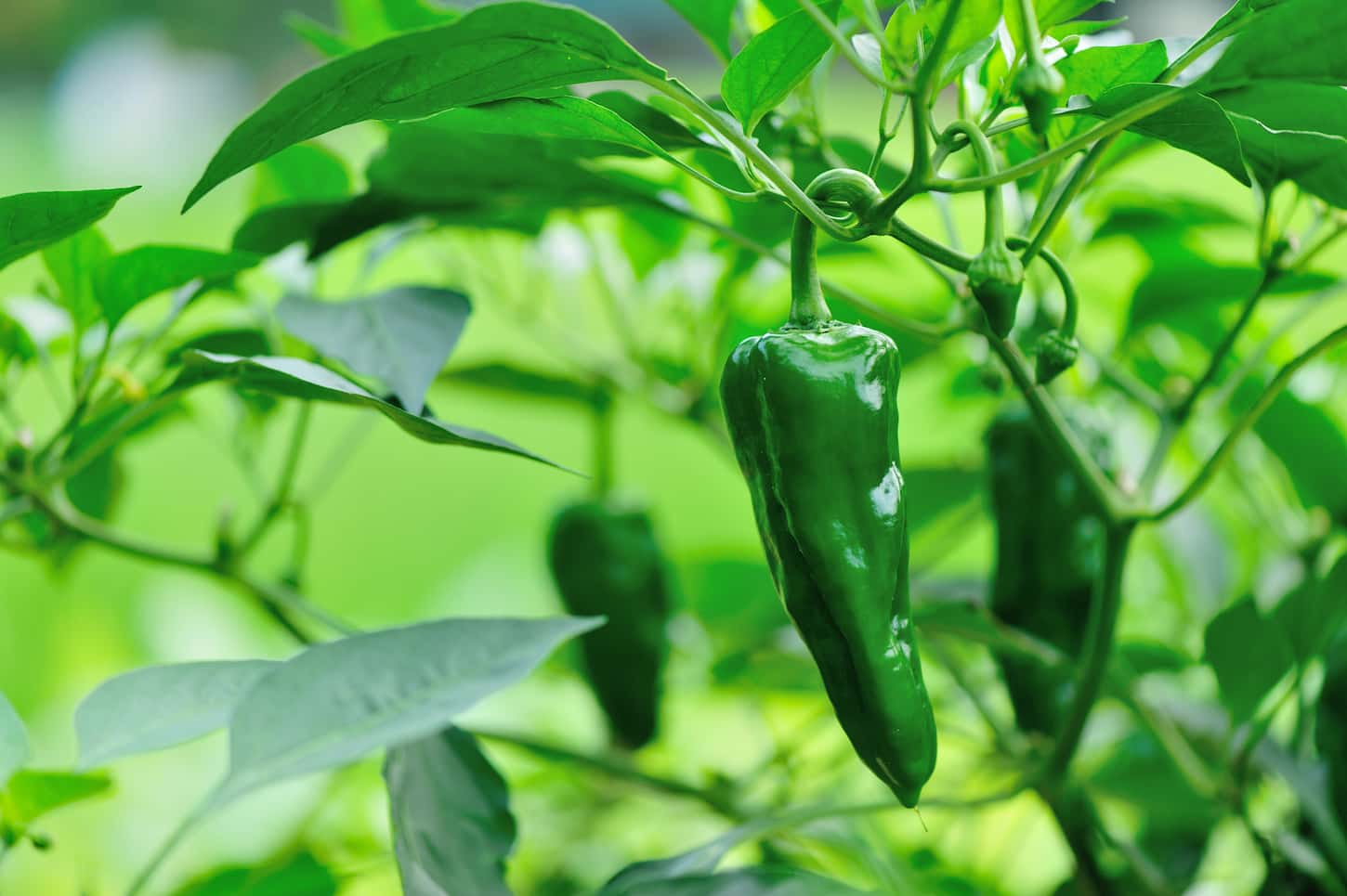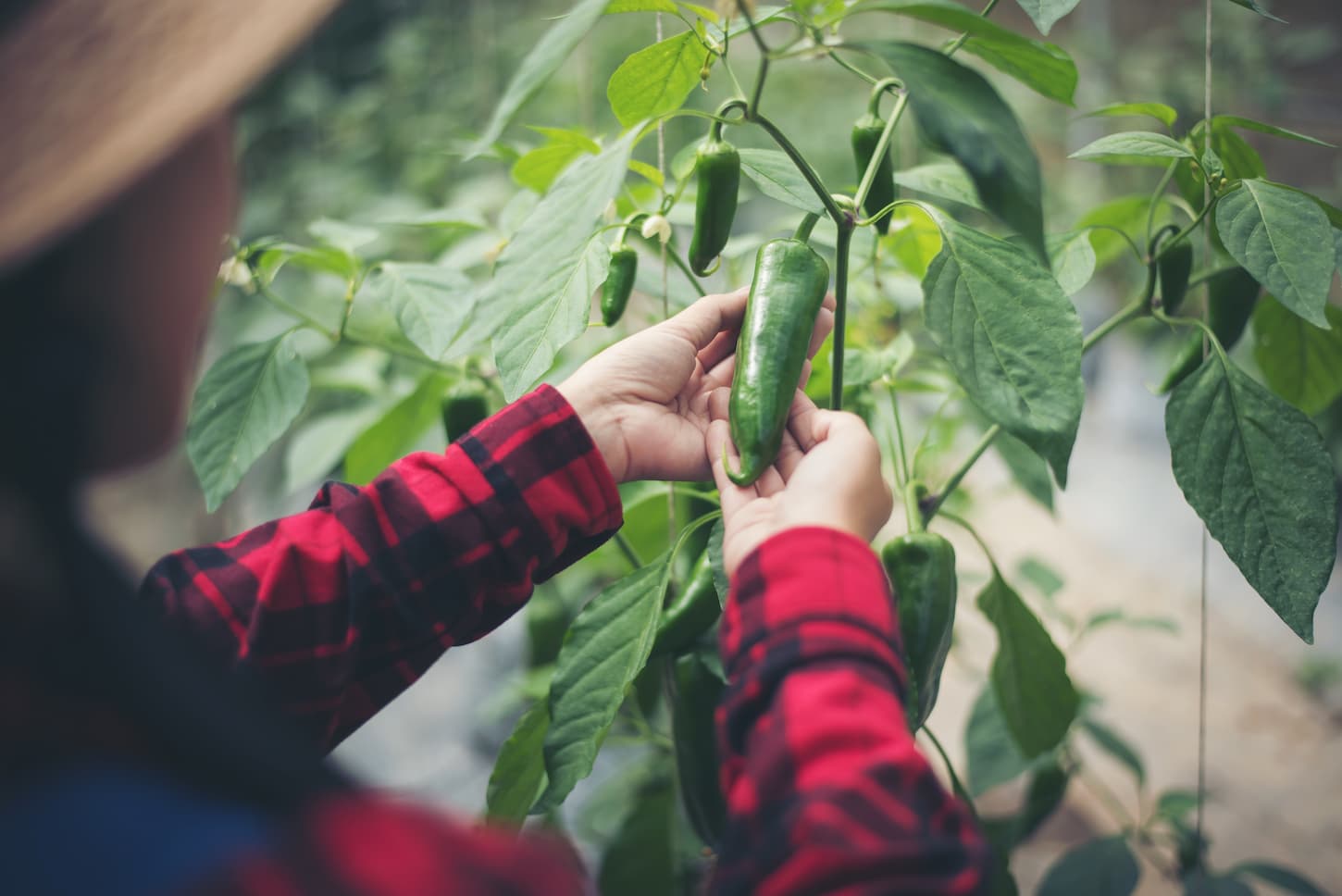If you’re keen to grow new plants but are tight with time, chili plants could be suited for you. But is there a good way to grow chili plants faster?
Chili pepper plants grow fast, but closely managing the fertilizer, sunlight, and growing temperature can speed up the time to harvest. Early harvest fans can start chili pepper plants indoors, buy a seedling, or keep a pepper plant for several years to speed up the harvest or enjoy it year-round.
Regardless of where you live, or if you decide to grow them indoors or outdoors, chili plants are very easy to grow at home. At the end of the day, it all does depend on the climate. Despite that, chili plants don’t require you to have an incredible, experienced green thumb.
For a whole rundown on how to get them growing speedily, keep reading.

How Long Does Chili Take to Grow?
It takes chili plants between 60 to 120 days to grow from seeds to full-grown plants with edible peppers. Different chili plants have varying growth speeds, with some types growing faster than others. In general, the stronger the chili pepper, the longer it takes for them to grow.
For instance, jalapeno peppers can grow faster than hot chili peppers.
Fun fact: a chili’s spice strength is measured on the Scoville scale. Chilies with over 80,000 points on the Scoville scale are considered extremely spicy. But there are stronger chilies that can go into several million points!
How Do You Speed Up Growing Chilis?
Chili plants cannot grow faster than they naturally take to grow, though good nutrition can help them grow strong quickly compared to an unhealthy plant. The only way to get to harvest peppers faster is by starting seeds indoors and planting them outside when it’s warm enough.
If starting seeds indoors doesn’t work this year, don’t stress. Most nurseries and big-box stores sell seedlings in the spring. Most popular peppers are carried lots of places, so you can always go pick up a few of them.
Now, I recommend getting a pepper plant from a nursery over a big box store. Most plants I’ve gotten and tested from big box stores tend to be root-bound. Getting a root-bound seedling can still happen at nurseries, but it seems to be rarer.
How Do You Start Chilis Early?
Chilis can be started or permanently grown in pots for easier movement between controlled indoor temperatures and being outside. Start chilis any time, so long as they’ve got an appropriate space to grow. Move chilis outside after the danger of cold nights has passed.
We like to start our chili seeds in late March or early April. That way, they’re not too large for our small pots and don’t risk getting root bound or top-heavy before we can transplant them into the garden.
However, if I had some larger pots (or didn’t have a cat who liked destroying plants), then I could start and keep peppers indoors year-round.
You can also move chilis outdoor earlier if you have a greenhouse or if you use a cold frame.

What Is the Best Fertilizer for Chili Plants?
Chili plants do best in slightly acidic soil fertilized with a 1:1 ratio of soil and compost. Chilis also do best with a healthy amount of nitrogen and phosphorus within that balanced mix of soil and compost, so they can grow well with tomato fertilizers.
Don’t bathe your chili plants in too much either nitrogen or phosphorus, or you’ll get a ton of leaf growth without getting any peppers. That’s why using a 1:1 mix of soil and compost is a perfect mix for chilis – that way, they get the right amount of everything they need to grow some delicious hot peppers.
I know you might be wondering if giving your chili plants extra nitrogen to boost growth early won’t help them grow faster. And while the extra nitrogen will help explode leaf growth, it won’t help speed up overall pepper production. If anything, in my experience it slows it down. Because you’ve got all those leaves – and no flowering buds.
That’s why I think sticking to a 1:1 compost and soil mixture is best. That way, you get great leaf growth while also getting a great harvest. And, in my experience, this also helps shorten the overall time to harvest – especially if you pair this with starting your pepper plants earlier indoors.
Due to the chili plant’s nutrient-hungry nature, regular fertilization is important. Natural fertilization is best, but if you must use synthetic chemical ones, use them sparingly as they can harm chili plants. Some people I know swear that the best fertilizer for chili plants is tomato fertilizer.
Regardless of what type of fertilizer you use, always remember to water after fertilization!
Chili seeds can be sown directly into the soil, given that the temperature is favorable. The soil should be slightly acidic, with a decent amount of nitrogen and phosphorus.
Using organic compost also helps speed up the germination process. A ratio of 1:1 of soil and compost is ideal, with cow dung compost, leaf mold, or vermiculite.
How Often Should I Water My Chili?
Chili peppers need damp soil and do well being watered every other day. Regularly check to make sure that the soil isn’t dry or too wet, or the plant will suffer from dehydration or develop root rot.
Chili plants cannot grow in dry soil, meaning you will need to water them regularly to keep the soil moist. In saying this, you should avoid overwatering because it can cause the root to rot.
Chili plants are prone to root rot disease, so it’s suggested that you water every alternate day.
Do Chili Plants Need a Lot of Sunlight?
Chili plants do best with 8 to 12 hours of sunlight daily for the best growth potential, though they can survive with a minimum of 5 hours of sunlight daily. Chili plants can also be grown indoors with artificial or grow lights to protect the plant from too-cold temperatures.
The more sun, the better, as chili plants thrive under the sun. Chilies need a minimum of 5 hours of direct sunlight per day and around 8 to 12 hours of general sunlight. If you’re growing the plant indoors, it’s possible for natural sunlight can be substituted with artificial light. This is especially effective if you have to move the plant indoors due to colder climates outside.
During cloudy days or when the sun isn’t as radiant, you can still get the sunlight your chili plants need. To amplify the amount of light that your chilies receive, consider placing tin foil or marble around the plants. This will reflect even more sunlight towards the chilies.
Alternatively, lamps with LED grow light bulbs can be used for indoor chili plants. For photosynthesis to take effect, the chili plants will require a few hours of zero to little light during the day. Therefore, it’s vital that you don’t leave on your lamp the whole day.
A combination of both sunlight and artificial light will give very similar results to using solely direct sunlight. However, the chili plant’s ability to grow is unaffected by the ratio amount of natural and artificial light it receives. Just make sure they are still exposed to sunlight and at the appropriate temperature for them to grow properly.
So, sitting a chili plant on a windowsill during the winter with a grow light on it? That totally works. Your pepper plant should do great.

What Temperature Do Chili Plants Thrive In?
Chili pepper plants grow best in hot climates. Seeds and plants grow best when it’s at least 80 degrees Fahrenheit or hotter during the day, with nighttime temps no lower than 60 to 70 degrees. Chilis can grow in both arid and humid climates if they get sufficient water.
In addition to an appropriate light amount, chili plants will also need the right temperature levels. Chili and pepper plants bask in hot and humid climates. A warm temperature is the best, which is generally during the daytime, at around 80 degrees Fahrenheit.
If you’re growing them from seeds, keep your chili seeds warm, as this is the best temperature for them to germinate.
Fun fact #1: Chili seeds are mostly round and are usually only 1 to 2 mm in diameter. I’m using millimeters because most tape measurers (like mine) won’t let me measure a 1/32nd of an inch.
Fun fact #2: A single chili can have as many as a hundred seeds! And yes, I’ve tried counting them before!
At night, temperature levels should be around 60 to 70 degrees Fahrenheit. Now, these are great general guidelines to get going. Know that the ideal temperature depends on the type of chili that you are growing. Before committing, ensure that you’ve done the research on your chili plant.
Here in Utah, we don’t plant our chilis in-ground outside until after Mother’s Day (mid-May), as that’s when the night and daytime temperatures are finally appropriate for peppers.
My sister, who lives in the humid South, keeps her peppers in pots. She only needs to bring them indoors during the coldest parts of the winter, and usually has them back outside permanently by mid-to-late April.
Fun fact #3: if you use a cold frame or a greenhouse, then you could move your chili plants into one of those outdoors for several weeks or more before you could without.

Taking Care of the Chili Plant for Faster Growth
To encourage faster pepper production for a harvest, regularly prune spent branches. Harvest ready peppers to encourage the plant to grow new fruit. Regularly water, fertilize and make sure the chili pepper plant gets sufficient nutrients, including sunlight.
Remember to remove any dead branches and dried fruits from your chili plant regularly. By keeping the plant healthy and happy, it will encourage faster growth. Keeping spent branches and fruits will only use up the nutrients, leaving the plant to have a nutrient deficiency.
Pruning is necessary for the new growth of branches and blooming. Chili plants can experience shock after pruning, but you can avoid this by fertilizing and properly watering them.
It’s also important that you prune them in the evening, rather than during the day. This way, the plant is in its “dormant for the evening” stage, rather than in its awake and growing stage.
How Long do Chili Pepper Plants Live?
Many hot pepper plants are perennial and can live for 5 to 10 years if they aren’t killed by frost, cold, or inadequate nutrition. These long-living plants just need the right care and requirements.
As they thrive in hot climates, the trick is to not let them freeze when the weather gets cold. Remember to water them every alternate day and provide ample light, from either the sun or lamps. When you can give them these basics, your chili plants will stick around for a long time.
You can read more about how long chili pepper plants live (and how to get them to last!) in my article here: Do Pepper Plants Grow Back Every Year? (Are They Perennials or Annuals?)
Next Steps
Now that you know more about chili pepper plants (and how long they live), make sure you’re ready to store them properly. They can be canned, dried, or freeze-dried. Personally, I’m a fan of freeze-drying our peppers. Read more about which foods freeze-dry well (like peppers) in the article I wrote here: 79 Foods You Can Freeze Dry and 17 You Cannot: Complete Guide.
References
- Dorland, Robert E., and F. W. Went. “Plant Growth Under Controlled Conditions. VIII. Growth and Fruiting of the Chili Pepper (Capsicum Annuum).” American Journal of Botany, vol. 34, no. 8, Botanical Society of America, 1947, pp. 393–401, https://doi.org/10.2307/2437149.
- Gou, Jing-Yi, et al. “Biofertilizers with Beneficial Rhizobacteria Improved Plant Growth and Yield in Chili (Capsicum Annuum L.).” World Journal of Microbiology and Biotechnology (2020) 36:86, July 2020, link.springer.com/content/pdf/10.1007/s11274-020-02863-w.pdf.
- “How Many Hours Of Light Do Chilies Need?” Rebootdiy, https://rebootdiy.com/light-hours-chilies/.
